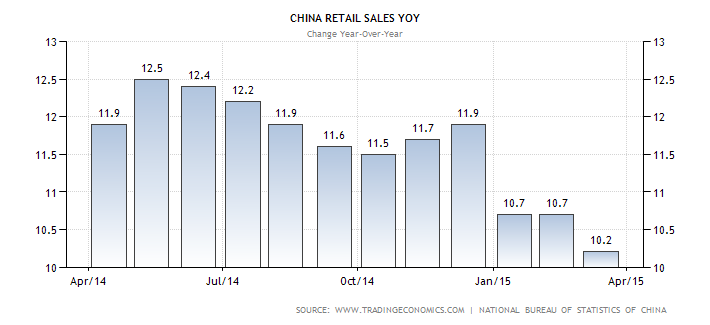While China’s economy certainly slowed in the March quarter – the news yesterday scaring markets into falling – it is not the bad news that many headlines and instant analysis made it out to be.
The slowing does fit the desire of the national government for a rebalancing of growth drivers from investment to consumption.
The 7% annual growth rate the slowest pace in six years – since the depths of the global financial crisis in the same quarter of 2009.
But the economy grew 1.3% from the previous quarter on a seasonally-adjusted basis, down from the 1.5% quarter on quarter rate seen in the December quarter of last year, China’s national statistics bureau said yesterday.
China’s economy grew at an annual 7.3% in the fourth quarter last year, so the slowdown is noticeable and the March quarter figure matches the new, lower forecast for growth this year from the central government.
.png)
After seemingly accepting the news, markets in Asia fell in afternoon trading – the Aussie sharemarket’s losses accelerated, and both the Hong Kong and Shanghai markets lost ground,
Chinese investors have believed for months (and bid share prices higher on that basis) that the government and central bank will add stimulus to the economy to halt any sharp slowdown.
The People’s Bank of China has cut interest rates twice since November (and cut bank reserve asset ratios to free up more money for lending as well) in an effort to stimulate investment by lowering borrowing costs.
But analysts say companies remain loath to invest even at lower rates, given weakness in domestic demand and highly indebted corporate balance sheets, especially among state-owned firms and especially in the property sector.
But accepting that, there were signs for concern in the GDP and other economic data released yesterday (See separate story on steel output and real estate investment falls).
Retail growth and industrial output weakened last month, while fixed-asset investment hit a 15-year low.
Retail sales grew just 10.2% from a year earlier, the slowest rate of growth since February 2006.
Retail sales increased 0.71% in March from February. In February, retail sales rose 0.93% from the preceding month.

Industrial output grew just 5.6%, the slowest since November 2008. Growth in output in January and February (combined to avoid lunar new year distortions) was 6.8%.
Month-on-month, industrial output increased 0.25% in March from February, when output rose 0.45% from January.
Fixed-asset investment – which includes spending on infrastructure, factory equipment and property construction – grew at a 14-year low of 13.5% in the year to March, down from 13.9% the first two months.
But power generation dropping 3.7%, the biggest fall since 2008, that’s a real sign of a slowing pace of activity in the economy, especially in manufacturing.













